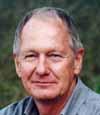Doing what comes naturallyThe ID movement has labored vigorously to
formulate a way to determine how things came to be actualized
(assembled, arranged, organized, constructed) in the course of time. In
contrast to theology’s concern - in its doctrine of
creation - for how any universe came to have its being (its existence and/or its
particular character) in the first place, the ID movement is concerned with
portions of the universe’s formational history.
In Dembski’s words, “Design is fundamentally
concerned with arrangements of pre-existing stuff that signify intelligence.” Purely natural processes are those that can be fully accounted for by the actions and interactions of the material substances of which the object and its environment are composed. These are the processes that the natural sciences are equipped to describe in terms of the empirically known mechanisms by which atoms, molecules, cells and organisms act, interact, organize or transform themselves. These are often designated in ID literature as unguided natural processes to distinguish them from other processes in which some agent (like ID’s intelligent designer) intentionally participates (or “guides” them) to bring about an outcome distinctly different from what would otherwise have happened naturally. In ID literature all natural processes or causes are presumed to fall into one of three causal categories: 1) chance, 2) necessity, or 3) the joint action of chance and necessity. Natural objects or events that are the outcome of pure chance are products of wholly random phenomena (a fair coin-flipping exercise, for example) with no patterning influences at work, and can best be described in purely statistical terms. Natural objects or events that are the products of necessity are the outcome of deterministic natural laws in which contingency and chance play no effective roles (as in the orbital motion of planets, for example). Most natural objects, however, are the outcome of the joint action of both chance and necessity, with randomness, contingency and deterministic laws each playing some significant role. For the purposes of his “design-theoretic” analysis, Dembski prefers to treat all three categories at once under the rubric of stochastic processes, a concept that allows for variable contributions of both chance and necessity - from pure randomness to full determinism, and all variations between - in one mathematically convenient formalism. Although the unwary reader might easily be confused, Dembski usually designates this full spectrum of causal possibilities by the label “chance.” Throughout most of No Free Lunch, the terms “chance hypothesis” and “chance explanation” do not refer to chance (random events or processes) alone, but must be taken to mean “all hypotheses, postulates and theories concerning the natural causation of events.” The comprehensiveness and inclusiveness of these terms must be understood in order to see the extremity of Dembski’s numerous claims in No Free Lunch.
Email link | Printer-friendly | Feedback | Contributed by: Dr. Howard Van Till |






